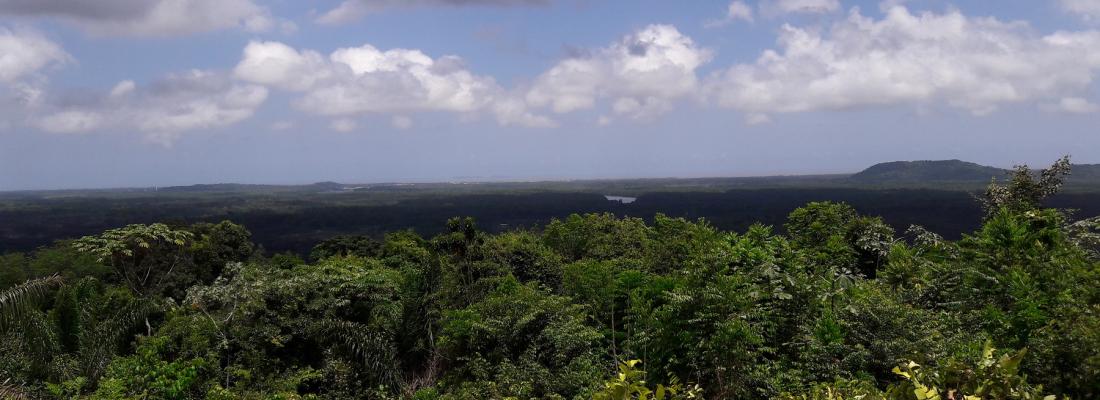Climate change and risks Reading time 2 min
Tropical forests are able to adapt to climate change, to a certain degree
Published on 25 May 2020

An international research team carried out the study on 813 tropical forests around the world. They were able to evaluate the growth patterns —including their carbon storage capacity—of around 500,000 trees, all of which were subject to climate change in different ways.
INRAE researchers contributed to the study by measuring tree growth in a tropical rainforest in French Guiana, in the footprint of the Guyaflux Tower. This is the first time a long-term climate change sensitivity analysis has been completed over tropical forests. To carry it out, researchers regularly measured the circumference of trees over several decades (20 years in French Guiana). Using dendrometric1 models, they were able to determine the carbon storage capacity of these forests, the way it evolves throughout time, and the climate factors responsible for inter-annual variations in storage capacity.
The results suggest that among the many disruptions caused by climate change, the increase in temperature has the biggest impact on carbon storage of tropical forests. Still, these forests are able to maintain their role of carbon sinks even in a hotter environment, to a certain extent. In fact, researchers were able to identify the average maximum daily temperature—32°C in the daytime—that tropical forests could endure while maintaining a normal functioning. However, in order to keep temperatures below this threshold in these regions, experts caution about the importance of limiting greenhouse gas emissions from now on. The forests’ capacity to adapt to rising temperatures depends mainly on their vast biodiversity, provided that it is preserved.
More than 225 researchers worked together to gather information on over 10,000 tree species in Africa, South America and Asia. This project, conducted over several decades, highlights the importance of international collaboration to study the effects of climate change on the functioning of terrestrial ecosystems.
1 Dendrometric models make it possible to describe tree size (diameter, height) variability and the factors leading to this variability.
|
Reference Sullivan et al. 2020. Long-term thermal sensitivity of Earth’s tropical forests. 368, 869–874. DOI:10.1126/science.aaw7578 |
